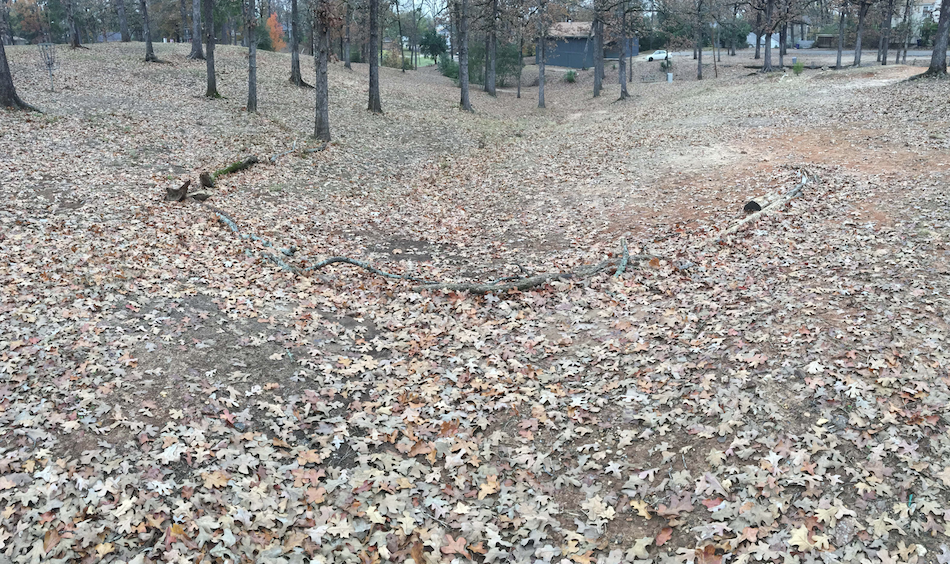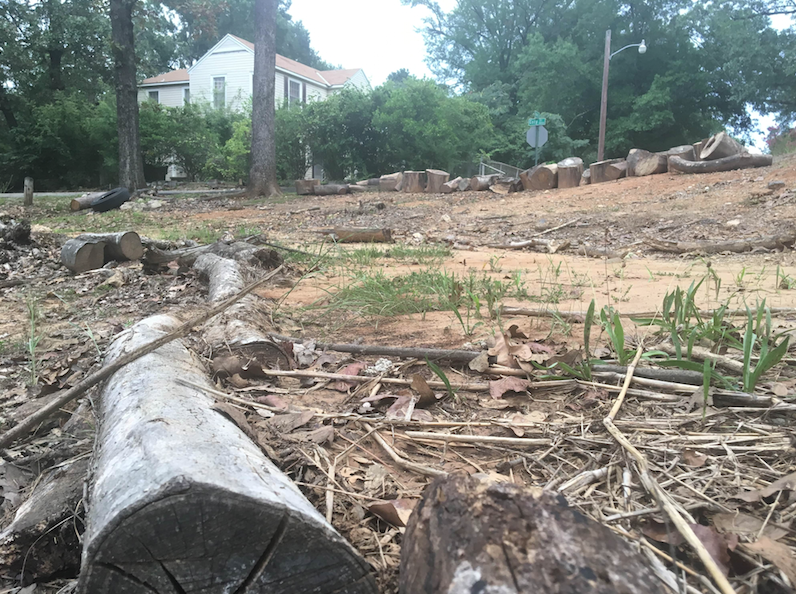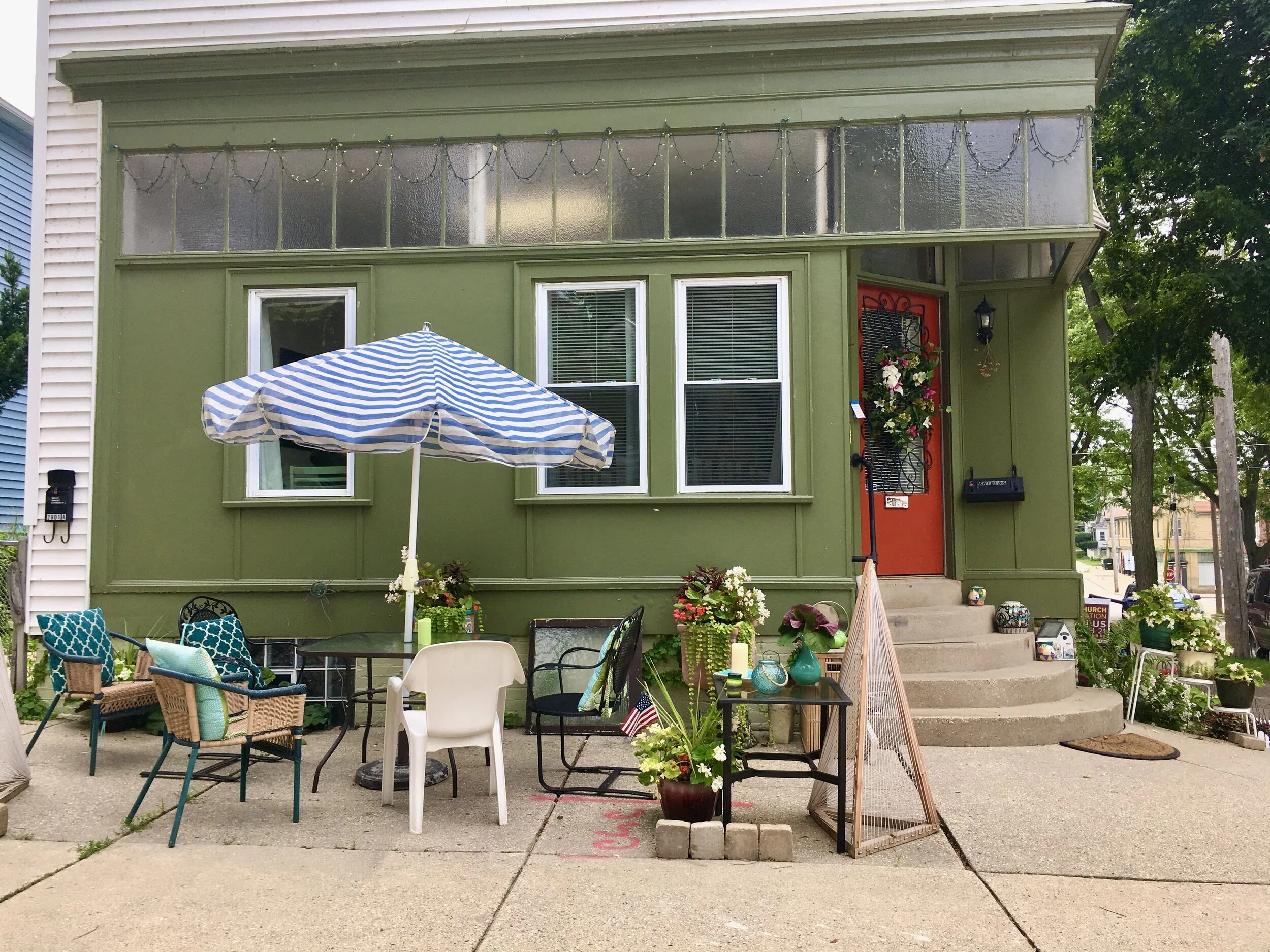Inspired Park Project Takes Root in Shreveport
Tim Wright is a Strong Towns member, advocate and engineer who lives in Shreveport, Louisiana. Today he's sharing a story about a strong citizens taking action in his community, inspired by Strong Towns.
Highland Park (Photo courtesy of Re-Form Shreveport)
As we usher in the new year, there is a lot to be excited about in Shreveport. My organization, Re-Form Shreveport, has spent the last year working in a local park in Northwest Louisiana. This project was inspired by a Curbside Chat we hosted in Shreveport with Chuck Marohn in 2016. After such a huge learning experience, we knew we had to practice what had been preached. And thanks to a few Strong Towns principles and a willingness to listen and learn, we’ve accomplished so much more than we originally set out to do.
When Strong Towns visited Shreveport, they inspired us to do the most with what we have, investing in existing neighborhood assets. Chuck Marohn told us that often, the best thing we can do is to spend a little time improving the value of a particular neighborhood asset, and that positive change will spill out into the nearby neighborhoods. So we decided to start in a neighborhood park called Highland Park.
Our first task was simple: clean up trash in the park. However, as we did so, we found most of the park covered with bare ground with no grass to speak of. Thankfully, a local resident who heard about the event on social media suggested a unique way to prevent erosion and replenish the soil in the park.
How did we do this? We took logs and placed them across the slope of the hills, perpendicular to the flow of water, while ensuring that they wouldn’t roll downhill. We then placed yard debris such as wood chips, leaves, or pine straw just uphill of the logs, which break down and decompose over time. These ‘level lines’ slow down the flow of water downhill, preventing erosion and allowing soil to form just behind them. Over time, we even started to see the ground taking a different shape as grass began to grow behind rows of yard debris.
This project has shown that changing your city doesn’t have to be expensive. For our first work day, we were able to use existing yard waste and trees cut down by the local power company to reshape our park. For subsequent work days, we developed a partnership with a local tree trimming operation, Figlio Tree Service, to deliver materials that we needed. This was mutually beneficial as we didn’t have to pay for organic material and the tree trimming service didn’t have to pay to drop limbs and branches off at another location.
Our partnership with the tree service taught us that our ability to utilize our relationships with other groups was a huge key to our success. We also partnered with a local boy scout troop that meets in the park and with Shreveport Green, a local organization focusing on the environment and healthy communities. By working with these organizations, we were able to share resources like wheelbarrows, rakes and shovels, safety vests, trash bags, and event insurance.
Our most important partnership has been with the Shreveport Public Assembly and Recreation (SPAR) department. Our local officials and staff have been open to new ideas and receptive to citizens that want to partner with them. This has been very encouraging, and is a practice that I think a lot of communities could tap into. If you want to be helpful, be consistent, know when to follow city protocol (you may have to do things like fill out an event form), and know when to nudge your leaders in a better direction.
As we’ve worked with the city to become a key partner in Highland Park, we’ve also learned about the city’s future plans for the area. In particular, a bond issue had been passed in 2011, dedicating over $100,000 towards Highland Park. That inspired our latest event, a community canvas to provide guidance on how to use money set aside for Highland Park.
So in December 2017, we headed to the park, this time with clipboards in hand, to ask folks what they wanted in the park. We went to the blocks just surrounding the park. Some people were so glad that someone was paying attention and of course, some others didn’t care to talk to us. However, we found that most people wanted to see a park where they felt safe taking their kids and where their kids had safe equipment to play on.
Our playground needs an update as well (Photo courtesy of Re-Form Shreveport)
We talked about basketball courts, gazebos, playgrounds and more. This door-to-door process engaged a more diverse group of neighbors than the typical crowd that is interested and able to show up at a public forum. Watch this video to hear more about our community canvassing experience.
So what’s to come in Highland Park? Once we follow-up with a few more homes in the neighborhood, we plan to present these results to SPAR to direct them on how to spend the remainder of the bond money set aside for the park. We plan to continue to support our existing partners in mulching the bare areas of the park which takes the same time and attention as gardening. Additionally, our partner John-Paul Young has used this momentum to start a campaign to plant 1000 fruit trees in Shreveport, with many in Highland Park. Check out this video to learn more.
Here in Shreveport, we’ve come a long way in just a year. We’ve learned about our city’s finances, engaged volunteers and residents, interacted with local officials, and listened to everyone. We haven’t done it perfectly, but such is the way of incremental change.
So in this new year, I invite you to get out there and listen, learn, adapt, and try new things in your city. It’s the Strong Towns way.
(Top photo courtesy of the Shreveport Times)
ABOUT THE AUTHOR
Tim Wright is a Strong Towns member and civil engineer who lives in Shreveport, Louisiana. When he's not working in CADD or GIS during the work week, he may be riding his bike, playing a board game, or strolling to his favorite downtown coffee shop. Since moving from Dallas two years ago, he's taken a liking to his new, southern city, doing anything he can to benefit his city through the Re-Form Shreveport initiative. Tim also writes for Heliopolis about infrastructure, community development, and anything else that may tickle his fancy.








